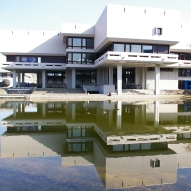Zusammenfassung
With the aim of exploring the effect of steric constraints imposed on the metal-metal interaction of bis-carbene analogues of thallium by the linking scaffold, seven dinuclear thallium diyls with a series of rigid, semirigid, and flexible bridging scaffolds were synthesized. The solid-state molecular structures were determined for four of these compounds by single-crystal XRD and compared with ...
Zusammenfassung
With the aim of exploring the effect of steric constraints imposed on the metal-metal interaction of bis-carbene analogues of thallium by the linking scaffold, seven dinuclear thallium diyls with a series of rigid, semirigid, and flexible bridging scaffolds were synthesized. The solid-state molecular structures were determined for four of these compounds by single-crystal XRD and compared with the results of DFT calculations, which were performed for all substances. These compounds serve as models to investigate the metal-metal distance in the absence of co-coordinated molecules (additional ligands, solvent molecules). In addition, the effect of the metal(I) precursor, and more specifically the counterion, on the synthetic access to bis-carbene analogues of indium and thallium was investigated. For indium, only InI yields the desired dinuclear indium diyl. With InBr no reaction was observed, and using InCl gave rise to a mononuclear indium(III) compound. For thallium, both TlI and TlBr allow access to the related bis-carbene analogue, although the yield with the latter is significantly lower. In contrast, no reactions were observed with TlCl and TlBF4.






 Altmetric
Altmetric